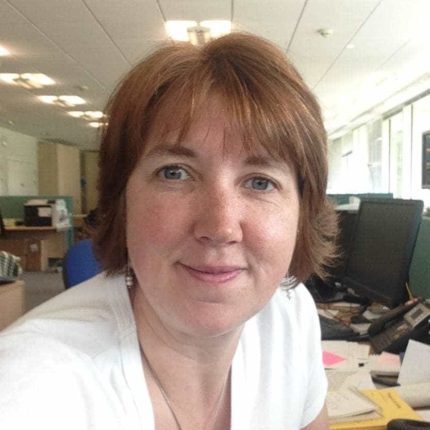Not since the McPherson Report have public institutions been under such heavy scrutiny for their efforts to combat racial inequality and racism. Increasingly, the institutions in question are universities.
Quantitative and qualitative data is challenging the once comfortable assumptions that universities are inclusive and have adapted to increased diversity. The attainment gap between black and ethnic minority (BME) students and white students suggests that they are not. According to Equality Challenge Unit, the gap between the proportion of white students and BME students obtaining firsts and 2:1s is 15.2 percentage points. The gap contrasts with schools, where many ethnic minorities outperform white pupils at GCSE.
A government study of 65,000 students in 2007 confirmed that after controlling for many variables, “being from a minority ethnic community [was] still statistically significant in explaining final attainment”. A 2015 HEFCE analysis came to the same conclusion. Both reports challenge the common belief that it is a deficit in student ability that accounts for this gap.
Kingston and Hertfordshire universities have committed to strategically reducing the attainment gap. Though initially independent in our approaches, there are some similarities and differences in how we have chosen to tackle this issue.
While many university boards and senior management teams may have given very little attention to the attainment gap, the leadership of Kingston University regard it as critical to the university’s business model, as over half the students are non-white. At the insistence of the vice chancellor, the board have made closing the BME attainment gap an institutional key performance indicator (KPI). At Hertfordshire, the pro vice chancellor has championed the reduction of the attainment gap and has overseen a BME student success project.
Both institutions have galvanised staff through ambitious aims and targets. Hertfordshire has publicly committed to reducing the attainment gap by ten percentage points. Kingston uses a customised value-added score to measure differences in attainment and set targets. The value added metric takes into account entry qualifications, the subject of study and five years of contextual data to produce an expectation for the attainment of cohorts of BME and white students. Using this and more simplified measures, both Kingston and Hertfordshire have overseen reductions in attainment gaps over the past four years.
The question of funding inevitably comes up in discussions about strategic approaches to tackling the attainment gap. At Kingston, project work is funded through the access agreement, and this is vital for the project’s reach and sustainability. Many institutions appear to separate their work on the attainment gap from access agreement and equality strategies. By ensuring the equality strategy and the access agreement were aligned, Kingston has ring-fenced funding and created the kind of synergies that Offa has been encouraging the sector to deliver.
Both institutions have been commended for their strategic approach and have been awarded the ECU’s Race Charter Mark. Both approaches have moved away from a student deficit model and concentrate instead on institutions’ cultures, practices and working habits. Hertfordshire has recognised the importance of unconscious bias training (with over 700 participants) and raised awareness through the use of data and conversations at teaching and learning planning days. Kingston believes that students are important partners in this work and have collaborated with the students’ union and over 150-course representatives to develop a joint understanding of the problem and possible solutions.
We have also worked on embedding inclusivity in the curriculum. Hertfordshire has an inclusive teaching strand in their curriculum design toolkit. This is embedded in the postgraduate certificate programme and reflected in validation and periodic review processes. The university has also issued a ‘Top Ten Tips’ guide for academic staff.
Over 300 academic staff, the students’ union and peers from other universities have piloted Kingston’s new Inclusive Curriculum Framework. The framework has been adopted by the deputy vice chancellor and will be used for creating new curriculum, validation panels and subject reviews. The attainment gap has been added to the metrics used to indicate the health and viability of courses. Both institutions have shown that embedding consideration of the BME attainment gap in quality enhancement is essential to enabling action beyond the first wave of change-makers.
Analysing the entirety of the student lifecycle – including access, continuation, progression, employability and graduate destinations – has also been important. Hertfordshire’s careers service has identified and promoted external diversity schemes for students including work experience, mentoring schemes, and scholarships. They have identified BME friendly businesses, provided guidance to employers and publicised diversity networks for specific professions (e.g. Black Solicitors Network).
Kingston has investigated personal factors which may influence success (e.g. lengthy commutes for students, caring responsibilities, and pressure of part-time work). This has led to outreach initiatives where commuting students live and partnership arrangements with local employers to enable student engagement in the local community.
Both universities are committed to sharing their practice across the sector as well as continuing their work to reduce the attainment gap. Kingston’s value added score metric has been adopted by Hertfordshire to enable further collaboration at subject and programme level, and both institutions are working continuously with students to better understand BME students’ experiences and change institutional processes to facilitate success.
The challenge is now for more HEIs to take action to reduce the attainment gap as part of a wider mission to fight inequality. Hopefully, the White Paper’s ambition to address disparities in outcomes for BME students may provide new impetus in this vital endeavour.














[…] switch to this new mode. Many have been sharing how particular groups, working-class students, BME groups, disabled students – all those with existing barriers to an equal opportunity to learn will be […]